Special formations of bone tissue, located in rows in the mouth one above the other, are teeth, and the quality of chewing food and the condition of the body as a whole directly depend on their number.
It is important to have not only healthy, but also beautiful and sufficient teeth, so every person should take proper care of them in order to preserve their natural teeth for as long as possible.
How many teeth does an adult have, including wisdom teeth?
The teeth have different shapes and each of them has its own purpose. It is not for nothing that doctors say that 32 is the norm, but not everyone can boast of such a number; many people have only 28, since the so-called wisdom teeth have not erupted. People need teeth not only for biting, chewing and holding food in the mouth, but also for correctly pronouncing sounds, so each is important.
There are 5 types of teeth:
- incisors- they are sharp and therefore participate in biting food, the number of incisors is 8;
- fangs- are located on the side of the incisors and help tear food apart, although they are much less developed compared to animals, the number of fangs is 4;
- molars (small)- they are also called premolars, on the surface of which there are two convexities, which makes it possible to grind pieces of food. Also, these teeth can tear food and they have 1, usually 2 roots;
- molars (large)- have a second name: molars, and depending on their location they have 2 roots (upper) and 3 roots (lower), in addition to 4-5 tubercles, there are depressions on the surface called fissures. A person has only 20 large and small molars.
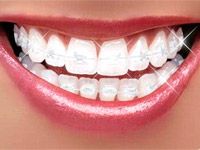 How to straighten your teeth without others noticing - read about transparent braces
How to straighten your teeth without others noticing - read about transparent braces
Are your gums bleeding? Read about the symptoms of periodontitis here
Ideally, there should be 32 teeth, including wisdom teeth, of which 4 are “eights.” However, due to the constant consumption of too soft food, the need for them is gradually decreasing, and now there are many people who are missing these molars.
It should be taken into account that, unlike other types of teeth, which complete the formation of their rudiments by the age of 3, the rudiments of eights appear much later - by 12 years.
Sometimes wisdom teeth are impacted, that is, they have erupted incorrectly: they can be partially hidden bone tissue or gums, which causes a lot of inconvenience to a person and can lead to an inflammatory process.

How teeth change and the number of baby teeth
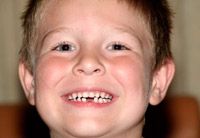
Photo: Teeth change begins at age 6
The very first teeth are temporary; their rudiments appear in the fetus in the mother’s womb and develop as it grows. The first temporary teeth appear in infants around the age of 4 months, although there are cases where children were born with 1-2 teeth.
However, teething is an individual process and depends on many parameters and the condition of the baby’s body.
There is a theory, which has several confirmations, that the onset of teething in a baby is directly related to a similar process in its parents: if this process started late for mom or dad, then it may be late for the child too.
It is rare, but it still happens that children have missing teeth up to 1.5 years of age. Usually, by the age of 3, a baby has a set of 20 teeth, which serve him until he is 6 years old, until his replacement with permanent teeth begins.
Proper eruption and development permanent teeth depends on the condition of the "milk".
The order of teething in humans is certain, and it does not change:
- first incisors (on both jaws);
- second incisors;
- first molars;
- fangs;
- second molars.
When it comes to the question of how many times a person’s teeth change, dentists answer unequivocally - once in a lifetime. A set of “baby” teeth gradually begins to be replaced by permanent ones at about 5.5-6 years, although this is also individual for each person. All permanent teeth appear between the ages of 12 and 14 years.
Replacement occurs like this: in the free space behind the temporary tooth, a permanent one begins to erupt, and if its predecessor was in an incorrect position, then this tooth will grow incorrectly, so it is important that children do not have unevenly spaced “baby” teeth.
The very last teeth to appear are the “wisdom” teeth - this occurs at approximately 17-25 years of age.
Video: how a child’s teeth change
Read about the treatment of periodontitis in children here
Are lincomycin and alcohol compatible - find out here
Tooth structure
No matter how many teeth a person has, they all have the same structure, although different size. Each of them has three sections, and depending on which part of the tooth is damaged, the dentist chooses treatment tactics. A human tooth consists of:
- root;
- necks;
- crowns
The root holds the tooth in the gum - fibers are attached to it and to the jawbone soft fabric. The root is covered with a very hard substance - cement, inside there is a cavity called a canal - nerve endings pass through it. Although the root is quite densely fixed by fibers, it still remains minimally mobile, which protects it from breakage during chewing.
The number of roots varies and depends on the type of tooth and where it is located - at the top or bottom. The place where the tooth begins to separate is called a furcation.
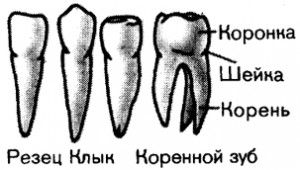
There can be from 1 to 3 roots, sometimes there are 4 or 5:
- mandibular canines, incisors, premolars have 1 root;
- mandibular molars and maxillary premolars have 2 roots;
- maxillary molars have 3 roots.
The neck of the tooth is immersed in the gum, and the crown rises above it. The crown is covered with enamel, which, although considered the hardest substance in the human body, can still be destroyed under the influence of certain factors.
Enamel covers dentin, which makes up the tooth; its structure is made up of many microscopic tubules. In the very center of the tooth is the pulp, where the nerve endings are concentrated.
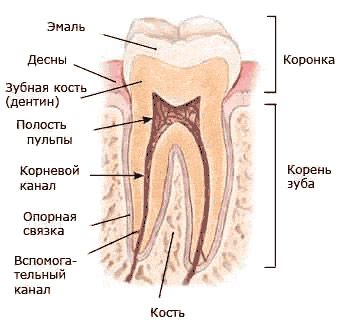
Anomalies in the number of teeth
A person does not always have the required number of teeth; from birth they may be more or less than normal. Such deviations are called hypodontia(if there are fewer teeth) or hyperdentia(if there are more teeth). Hypodentia is caused by diseases of the mother during gestation, which result in the destruction of tooth buds. Hyperdentia can occur due to atavism or bifurcation of the rudiments.
Diseases that provoke hypodontia, usually infectious: syphilis, tuberculosis and others. They most often contribute to disturbances in the formation of primordia, but can lead to their death. The number of teeth depends on the presence and severity of the anomaly: 1 tooth or a group is missing, whether hypodontia is accompanied by a violation of the shape or structure.
Hyperdentia may arise due to the fact that during the formation of tooth primordia in the human embryo, the dental plate exhibits greater productivity.
Another reason why supernumerary incisors or canines sometimes appear is atavism, because thousands of years ago people had not 4, but 6 incisors, 2 of them disappeared in the process of evolution.
Thus, there is a return to the previous set, which consisted of 44 teeth.
Every tooth is important for a person, so it is necessary to properly care for them and maintain hygiene. Dentists remove teeth only when absolutely necessary, preferring to treat them.
Video: how to brush your teeth correctly
Attention, TODAY only!
OTHER

When a child is born, it becomes a long-awaited event for his parents. But at the same time it brings…

A baby's first tooth is a big event in the family. Some teeth appear earlier, others later. But it's not worth it...
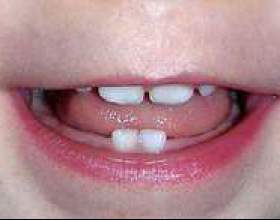
For parents, waiting for the first teeth to erupt in babies is always an extremely exciting process and associated with a lot of...
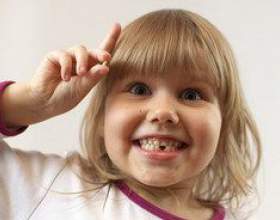
We all remember those sleepless nights when our dear little one was teething for the first time. Teething is quite...
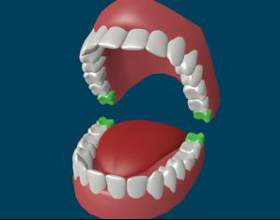
Everyone becomes the owner of wisdom teeth. Many people do not know how many wisdom teeth a person has and why they grow...
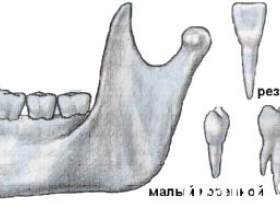
The tooth, despite its unremarkable appearance- Very a complex system. Each of its elements performs certain...
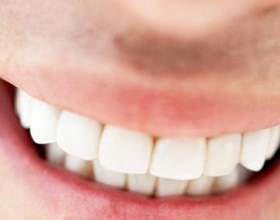
Teeth are special bone formations in the oral cavity of any living creature. They are arranged in the form of arches,…
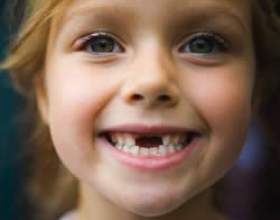
A mixed bite is a higher degree of development of the dental system, which is characterized by simultaneous…
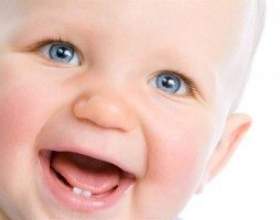
Parents eagerly await their child's first tooth. Each child experiences this period differently.…
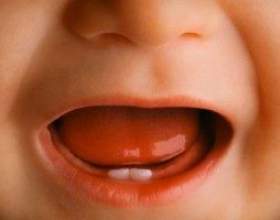
The process of teething in babies is quite exciting and painful for both the baby and his parents. AND…
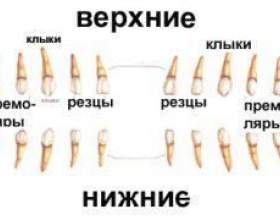
Wisdom teeth (eights) begin to grow at a fairly conscious age, but despite this, everyone still has a lot...

Special bone formations teeth located in the oral cavity are found in humans, animals, and fish. They are located in two arches located above each other, the upper surfaces of the crowns touching each other when a person closes his jaws. The resulting bite is the object of study in the science of orthodontics. If a person good teeth- this is also an indicator of the quality of the body’s functioning as a whole. But usually it is not enough for people to simply have their teeth perform their function well; they also want the smile to be attractive, the teeth themselves to be even, white, and straight. Because the questions are how many teeth does a person have How to properly care for them, how to straighten or insert teeth and others are of interest to everyone.
Main types of teeth
Human teeth have different purposes, according to which they differ in shape and characteristics. In general, teeth should be capable of grasping, chewing, and holding food in the mouth. They also participate in the speech process, influencing the pronunciation of sounds.
Incisors are teeth that are located in front of the dentition. They got their name due to the presence of a cutting edge designed for biting off pieces of food. On the sides of the incisors are fangs - cone-shaped teeth that tear off pieces of food. Human canines are underdeveloped, unlike the fangs of predators. Behind the canines are premolars - small molars with one or two roots and two tubercles on the upper surface. The function of small molars is to crush food and grind, although these teeth can also tear pieces.
Molars are larger teeth called molars. They have 2 roots - in the lower molars, and 3 - in the upper ones. On the contact upper surface there are chewing tubercles and depressions - fissures. Molars crush and grind pieces of food.
How many teeth does a person have?
First of all, it should be mentioned that throughout a person’s life, two sets of teeth grow, of different numbers. Temporary milk teeth are similar to permanent ones, but they have a slightly different shade, are weaker, and smaller in size than permanent ones. The name “milk” comes from their whitish-bluish color.
Despite the fact that there are only 20 of them, and that they are present in the mouth for only a few years, milk teeth play a role in the development of teeth that will remain with a person for life. important role. They begin to erupt at about the age of six months, and by the age of three, children usually complete the formation of the entire row of milk teeth.
The appearance of the first permanent teeth begins at the age of 5-6 years, the process is completed by 13-14 years. The first permanent teeth grow behind the milk ones in a free space, and over time, after the roots dissolve, the temporary teeth themselves fall out, giving way to new ones. The process of loss and replacement of baby teeth occurs in a certain sequence.
If you are asked: “How many teeth does a person have?”, you will probably answer without hesitation - 32. Although in fact the answer is not so clear-cut. Of the 32 teeth on each jaw there are 4 incisors, 2 canines, 6 molars, 4 premolars. But sometimes there are only 28 teeth in the mouth: when the third group of molars - “wisdom teeth” - do not grow. They usually appear at the age of 16-25 years, but may also grow after 30 years of age or not appear at all. Over time, the number of people with an incomplete set of teeth is increasing; now it has already reached half of the world's population. It is commonly read that this is a sign of the continuation of evolution, as a result of which the third large molars, which are practically useless for chewing, are being reduced.
And if we asked our ancestors how many teeth a person has, we would get the answer - 44. Previously, there were 12 more teeth than now! Each jaw had two more incisors and four premolars. Dentists believe that soon enough in the oral cavity modern man the second incisors can be reduced, and then the second and third molars. We eat mainly soft foods, some types of teeth lose their necessity, and the jaw becomes smaller. To stop this process, all dental system should receive sufficient exercise - in particular, by chewing coarse plant foods.
Tooth structure
The main parts of the teeth are the root, neck, crown. The crown is covered with enamel. This is the part of the tooth that is visible. Enamel is a hard substance that can resist decay. The neck of the tooth is in the gum, the root penetrates into jaw bone. Dentin is the main substance that forms the entire mass of the tooth. It has high strength, but is inferior to enamel. In dentin there are many tubules with processes of cells that make up dentin. In the tooth cavity there are also blood vessels, supplying living tissues of the tooth nutrients, and nerve endings.
The covering of the tooth root is made of bone-like cement. Numerous fibers are attached between the bone and cementum, which help keep the tooth in place while maintaining some mobility. The latter somewhat reduces the likelihood of tooth breakage during chewing. The cavity inside the tooth passes into the root in the form of a canal, at the top of which there is a hole. Dental cavity filled with pulp, which contains nerves and vessels that pass through the hole in the root. How many teeth a person has, methods of treatment and prevention, diseases, anatomy, structure of teeth - all these questions are studied by the science of dentistry.
Tooth growth abnormalities
If you, wanting to check how many teeth a person has, count an incomplete set in your mouth - 30 or 28 teeth, this is quite normal. But there are real anomalies in the growth of teeth. They concern changes in color, size, quantity (not taking into account the absence of “wisdom teeth”). Permanent bite may contain impacted - so-called supernumerary - teeth. Impacted teeth do not emerge from the thickness of the bone, and the place intended for them by nature in the mouth is covered only by mucous membrane. This can occur due to premature removal of temporary teeth, lack of space, due to previous inflammatory diseases. Often the cause is the incorrect initial location of the tooth germ.
Supernumerary teeth try to erupt, even if there is no room for them. They're putting pressure on adjacent teeth, nerves, when partially erupted, cause infection or inflammation. Diagnosis of impacted teeth is carried out using x-rays and computed tomography. These photographs enable the dentist to determine the future fate of the tooth - whether to remove it or to pull it out using orthodontic methods. "Wisdom teeth" that never erupted are also impacted, but their absence usually does not cause any problems.
Almost any problem with the growth and quality of teeth today can be solved. First of all, you must always maintain oral hygiene and undergo timely preventive examination V dental clinic. You also need to take care of your gums to prevent
Everyone knows about this. We were taught this at school, numerous advertisements in the media speak about this. mass media. But if you start counting them in your mouth, many adults will count fewer, which is surprising. So how many teeth does an adult have and what is considered normal?
How many teeth does an adult have?
If a person, when counting, finds only 28, and not 32 teeth, then he immediately wonders where the other four went. Every dentist will explain this situation to you.
An adult has exactly 32 teeth. If there are fewer than 28 or 30, this means that the third molars have not yet grown. These are eights. Their development begins much later. All populate the jaw rows from 6 to 12 years of age. At the age of 16, dentists consider a number of children to be formed. Although the third molars have not yet grown during this period, their rudiments are already there and they have taken their place. But for most people they may never appear, or they may appear only during upper jaw. How they develop depends on a dozen circumstances:
- genetic predisposition;
- the influence of evolution on the development of the jaw system;
- food consumed and much more.
Genetics and dentists have noted that in the process of evolution, human teeth have also changed. Initially there were 44 of them. Our distant ancestors consumed solid foods. Therefore, their jaw system was different, and all teeth took part in chewing. Today, soft food predominates in the diet. The human lower jaw has become smaller and there is not enough space for the third molars to develop. This is the reason why they remain in their infancy and sometimes erupt incorrectly.
Eights begin to grow by the age of 17. This process is considered complete by 25. Therefore, if by this time a person does not see the required amount in his mouth, it is recommended to consult a dentist. It will exclude an anomaly in the development of third molars, when they grow to the side and displace the molar located nearby.
Therefore, if we answer the question posed above, there is no clear answer. – 32. But numbers 28 and 30 are also considered the norm, subject to normal development.
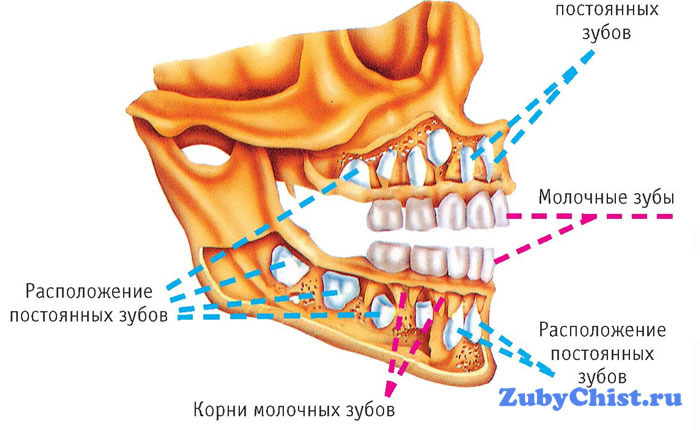
Location
This is a human bone organ that is incapable of regeneration. They play an important role in the digestion of food and are the first in the digestive system. The first ones, which appear from 6 months to 2 years, are milky. By the age of 10–12 years, they should be replaced by permanent teeth. Their number is 28. Nature is designed in such a way that a person’s teeth fall out once, and then they are replaced. Therefore, it is important to keep them healthy.
Can a person have 33 teeth? This anomaly is extremely rare. Scientists say that this is 3% of the entire population.
Number of dairy
The moment of the appearance of the first incisors is touching, even despite all the capriciousness of the child. All parents are looking forward to it. , like their followers, also have a root system, blood vessels and nerve endings. That's why some children suffer from pain. They are also susceptible to diseases and require normal care.
They are laid in the embryonic period, and begin to grow when the child is 6 months old. This is an approximate time. It is possible that the start of eruption may move in one direction or the other. This is considered the norm. They grow up to two and a half years. They appear in a certain order.
- If the child is from 7 to 9 months old, there are 4 of them. These are two upper and lower incisors.
- About 8 teeth should be present at 1 year. The readings are inaccurate, since for a certain percentage of children this figure reaches 12.
- From 1.5 to 2 years, their number varies from 18 to 20.
- at 2 years exactly 20.
The development of baby teeth is individual and depends on dozens of factors. Therefore, if they notice small deviations from established norms, this is not a reason for parents to panic and worry.
Dentists and pediatricians use a formula to determine the number of teeth: subtract four from the number of months of a child’s life. According to it, the number of teeth at 2 years is 20. These are 8 incisors and the same number of molars, 4 canines.
In the period from 2.5 years to 3 years, a period of freezing begins in the development of the child’s jaw system. All 20 teeth of a child are actively involved in chewing. During this period, it is important to follow the rules of hygiene and monitor their health.
The enamel of baby teeth is thin and is more susceptible to caries, so children are not immune from this disease. Don’t be afraid to contact the dentist if your baby’s row has become unusable. Modern equipment helps make the treatment painless for the child. The formation of permanent ones depends on their health. Therefore, it is important to keep an eye on them.
Number of indigenous
The four, five, six and eight in the upper and lower jaws on each side are called molars. There should be 8 primary molars, 4 on each row. An adult has 20 of them, 10 on each jaw, including the four third molars. But since they may not exist, the number of molars in the mouth of an adult varies from 16 to 20.
Dentists distinguish between small molars (premolars or fours and fives). The crown has 2 visible cusps. They have one or two roots. Their function is to grind food. The rest are large molars (first, second, third molar or six, seven and eight). There are 12 such teeth. The crown already has four visible tubercles. The number of roots reaches 4, and sometimes 5 pieces.
Humans have 8 primary primary teeth. The structure differs from permanent ones, but they perform the same function as their successors. If you want your child to have no problems for a long time after the jaw is fully formed, teach him the procedure for oral hygiene, enrich his diet not only with foods rich in calcium, but also with vitamins and minerals. Teach and explain that you need to visit the dentist regularly.
Each of us knows that an adult should normally have 32 teeth in his mouth. But there’s still some! Are they included in this number or are they in addition to the generally accepted norm? What numbers should be used when it comes to the oral cavity of an adult? You can find a comprehensive answer to this very interesting question in our article today.
How many teeth does an adult have?
Children over 12 years old have only 28 teeth. Why so few? The fact is that a couple more teeth on each jaw grow only by the age of 30. And it happens that it doesn’t grow at all. It all depends on anatomical features human body. Third molars (wisdom teeth) are the 4 teeth that appear last. However, the absence of these molars is also considered normal. Consequently, a person with 32 or 28 teeth is considered complete in terms of dental development. If you can boast of a full set of teeth, then we congratulate you. After all, an adult 30 years old often has only 26-27 teeth, since by this age he has lost several molars due to advanced caries.
Let us note that wisdom teeth erupting are quite problematic, so it is unrealistic to miss this moment. The gums swell, hurt, and the body temperature rises. In most cases, molars do not erupt correctly and have to be removed. Wisdom teeth occupy the eighth position. They usually appear in pairs, but it also happens that only 1 or 3 teeth grow.
Features of the structure and canals of teeth in an adult
We invite you to find out the names and locations of teeth in the oral cavity, as well as find out how many roots and canals each tooth has. So, a dental set of 32 pieces consists of the following incisors, canines, premolars and molars:
- central incisors (units) located one at a time in the top and bottom rows, have 1 root and 1-2 channels;
- lateral incisors (twos) have the same location and number of roots and canals as the previous teeth;
- fangs (threes) located in the upper and lower rows, have one root and one canal in each tooth;
- first premolar (quad) in the top row it has two roots and two channels, in the bottom row - one each;
- second premolar (five) both in the upper and lower rows have one tooth root and canal;
- first molars (six) in the top row it contains 3 roots and the same number of channels, in the bottom row - 2 roots and 3 channels;
- second molar (seven) in the upper row it contains 2-3 roots, in the lower row - only 2. There are 3-4 canals in the tooth of the upper row, and in the lower row - no more than 3;
- third molars can have from 2 to 5 roots, Moreover, they often grow together and form one massive root. There are up to 8 channels in the figure eight.
- You need to brush your teeth 2 times a day, not more often, otherwise the enamel will be destroyed;
- It is necessary to carry out oral hygiene 30 minutes after breakfast or dinner so that food enzymes do not react with the ingredients of the toothpaste;
- After snacks, you need to rinse your mouth with water or a special mouthwash. Dental floss will also come in handy in this case;
- The duration of brushing your teeth is at least 2 minutes, and it is better to circular movements with a brush so as not to injure the gums;
- Using an electric toothbrush will get rid of plaque and avoid the formation of tartar.
It is important to note that the number of roots and canals may differ due to the fact that the latter often bifurcate near the pulp. It also happens that several channels are located in parallel in one root. That is why the dentist uses an x-ray to accurately count everything in the tooth.
How to keep your teeth healthy?
Oral hygiene is the main condition for maintaining a full set of teeth into old age. However, not all of us know how to properly brush our teeth and take care of our teeth. oral cavity. Therefore, we suggest that you familiarize yourself with the following recommendations from dentists and follow these rules unquestioningly:
This is the kind of entertaining arithmetic we did in our article today. Now you know how many teeth an adult should have and how to maintain a full set of teeth for many years.
Everyone has heard the expression that 32 teeth is the norm, and after that they always wondered why you have fewer? Where are the others and when will they grow up? Let's find out.
How many teeth should a person have? An adult should have 28 teeth by the age of 18-20, while the remaining 2 pairs can grow by the age of 27-30. That's why they were called wisdom teeth, because of their late appearance.
But there are often cases when they may not grow at all. All this is directly related to human evolution - food has become soft and pliable, long chewing is not required, therefore, there is no need for them.
Permanent teeth
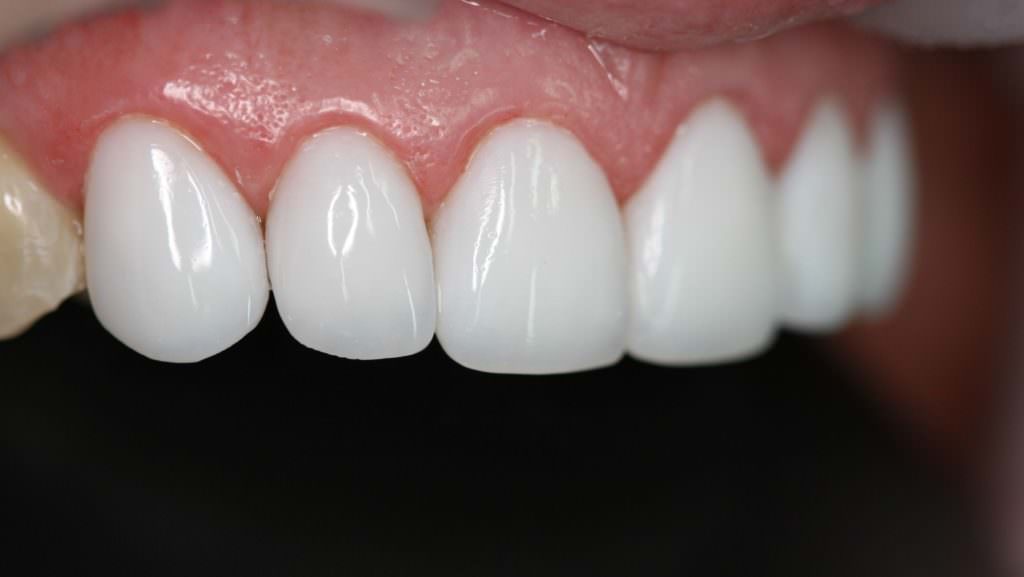
In an adult, from 28 to 32 permanent teeth. IN early age 20 of them change, the rest do not change, but immediately become permanent.
The cutting order is as follows:
- From 6 to 7 years of age, the central incisors of the upper jaw and the first molars of both jaws erupt.
- From 7 to 8 years of age, the central incisors erupt lower jaw and lateral incisors of the lower jaw.
- From 9 to 10 years of age, the canines of the lower jaw erupt.
- From 10 to 11 years of age, the first premolars of both jaws and the second premolars of the upper jaw erupt.
- From 11 to 12 years of age, the canines of the upper jaw and second premolars of the lower jaw erupt.
- From 12 to 13 years of age, the second molars of the upper jaw erupt.
- From 16 to 30 years of age, the third molars of both jaws erupt.
The speed at which they erupt varies and depends on many factors. It can be affected even if it falls at the wrong time. baby tooth. This entails a problem such as malocclusion.
Wisdom teeth
 Wisdom teeth are called third molars – popularly known as “figure eights”. Laying the foundation for them occurs at the age of 4-5 years.
Wisdom teeth are called third molars – popularly known as “figure eights”. Laying the foundation for them occurs at the age of 4-5 years.
Their appearance is possible starting from 17 years of age and older, although there are frequent cases of them complete absence or partial eruption (in in this case they are called semi-retinated).
There are also situations when a person may grow one or two wisdom teeth. This also should not cause concern, everything is within normal limits. Some scientists say that if people continue to eat soft food, in the future a person will completely get rid of this vestige.
By the way, our ancestors had 44 teeth - the food was coarse and required long mechanical processing. Modern dentists often insist on removing figure eights, especially if they are located far away.
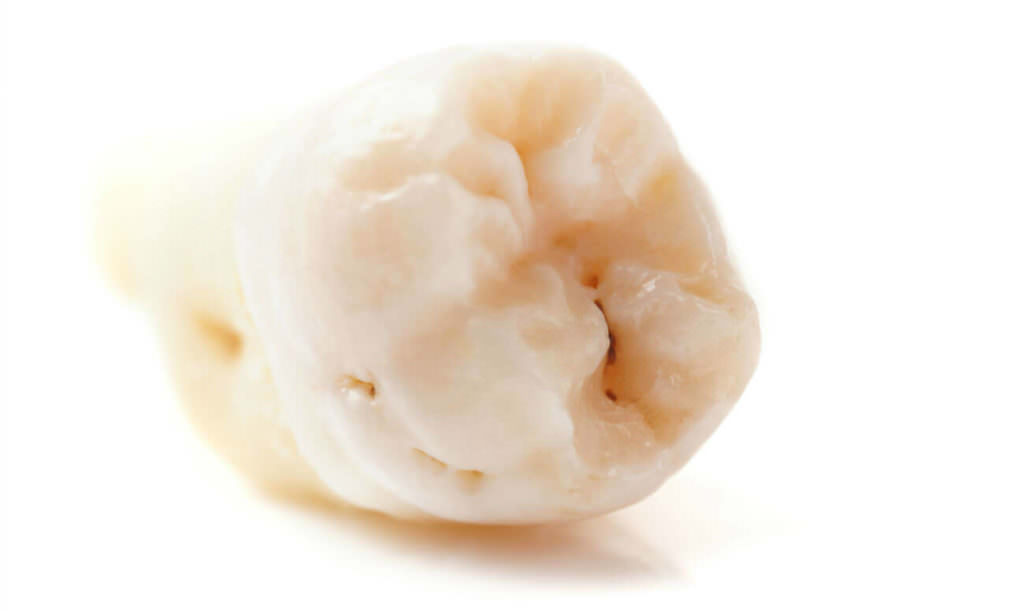
They give the following reasons:
- Wrong position in the row. It can be positioned horizontally or have a strong slope. At the same time, such a tooth is not involved in chewing, nor can it assist in prosthetics. When tilting towards the cheek, a person bites it - this is also a reason for removal.
- Little space for further eruption or crowding. When the “eight” has just appeared, and there is already little room for it, it is necessary to get rid of it. The reason is simple - it puts pressure on the remaining teeth and contributes to their displacement.
- Pericoronitis(inflammation of the hood). When part of the crown is covered by an overhanging hood of the oral mucosa, a space favorable for the growth of bacteria is formed under this hood. To get rid of this, you can use the third molar.
- Severe destruction of the crown. If the crown is destroyed due to mechanical damage or, removal is required.
But there are also indications for their treatment for subsequent preservation:
- They are necessary for prosthetics. If there is no “seven” or “seven” together with the “six”, they will allow you to install a one-piece fixed prosthesis.
- It has an antagonist and it has the right position. Removing one of a pair of interlocking teeth can lead to the fact that the second, due to lack of load, moves out of its seat and there is a high risk of losing it.
- There is pulpitis, periodontitis or"eights". Pulpitis, just like periodontitis, for successful treatment implies the need for filling. Provided they have good patency, the third molar can and should be treated.
Features of the structure of dental canals
The root canal is an anatomical space, which in its structure has a pulp chamber. That, in turn, is connected by channels.
All of them are divided into the following types:
- Type I – one canal with an apical foramen.
- Type II, III - often observed in premolars. Their feature is branching at different levels of the root.
- Type IV - has in its structure a single mouth and two separate root canals ending in two apical foramina.
- Type V, VI, VII - often found in the lower incisors and are distinguished by the types of both fusion and branching of the canals.
- Type VIII - three-channel with three apical openings.
The structure of root canals varies not only in type, but also in its shape and quantity.
They can be divided into the following groups:
Frontal (front)

These include:
- Upper central and lateral incisors, upper canines. Consist of one root and canal. It is extremely rare to observe both a two-channel and a two-root type. The type of structure of the lateral incisors shows a distal bend. The apex of the canines has a buccal curve.
- Lower incisors and canines. 37% are two-channel, the channels of which are often merged with each other. The gap in the mouth of the root is clearly visible on x-rays, and after branching it is barely distinguishable.
Lateral
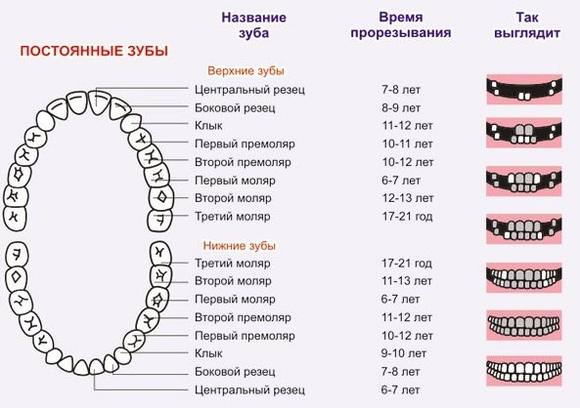
These include:
- Upper first premolars. 20% are single-canal and single-rooted teeth, 79% are double-canal and double-rooted, and 1% have three roots with three canals: one palatal and two buccal.
- Upper second premolars. In their structure, 56% are single-rooted, 46% are double-rooted and 2% are three-rooted, having a rather complex morphology.
- Lower first premolars. According to a study conducted in 1955, the majority of mandibular first molars—81%—are single-canal. The rest are two-channel. The 1979 studies are different - 70% single-channel and 30% dual-channel. 0.5% accounted for three-channel. The separation of canals on multi-canal teeth usually occurs in the middle part of the root.
- Lower second premolars. Most second premolars are single canal. Cases of a two-channel or three-channel structure are extremely rare.
- Upper first molars. In two out of three cases they have two channels, in the rest - one. The buccal root is medial, wide and flat; it is this structure that causes the two-channel structure. The orifice of the medial buccal canal is located under the medial buccal tubercle.
- Upper second molars. They are characterized by diversity different types buildings. There are both three roots and three canals, and four canals with the same number of roots. They have a C-shaped canal structure at the confluence of the palatine with the medial-buccal root or the distal-buccal root. Cases of a two-channel and two-root structure are quite rare; cases of a single-channel structure are even more rare (no more than one percent of all observed cases).
- Lower first molars. A two-channel structure is often observed in the medal root, and in the distal root in two thirds of cases. Moreover, in 48% they are four-channel. With a three-channel structure, the third is distal-lingual.
- Lower second molars. Often their root is conical in shape, but variants with a more complex canal structure (crescent structure) are not uncommon. The most commonly observed is a two-root, three-channel structure.








